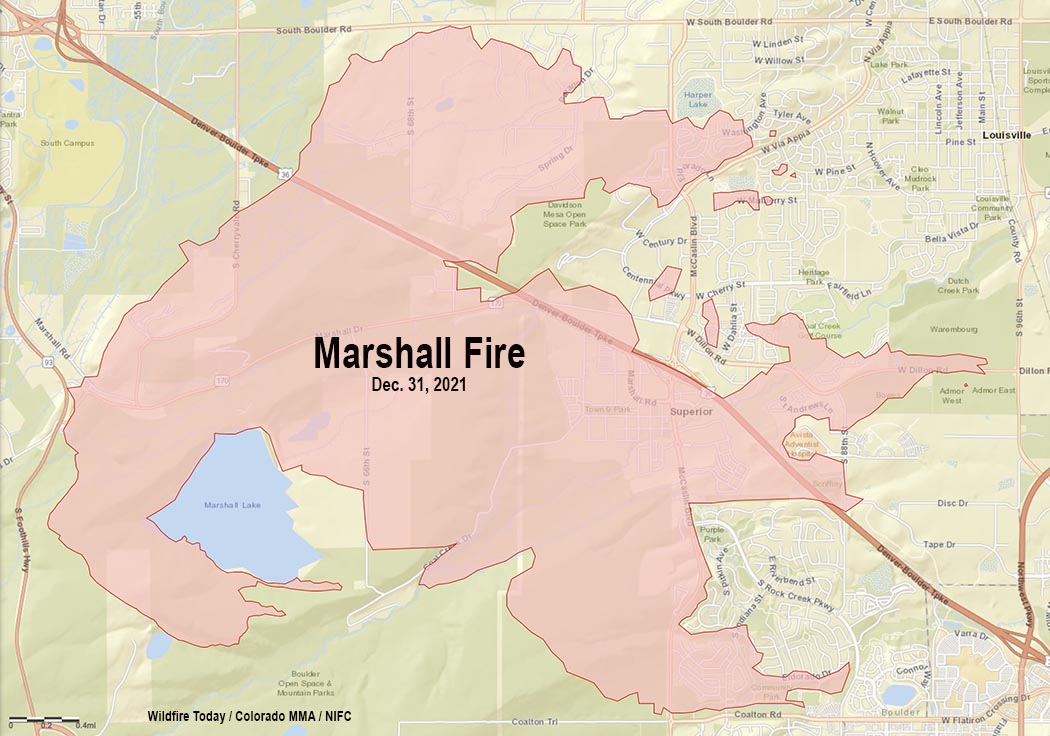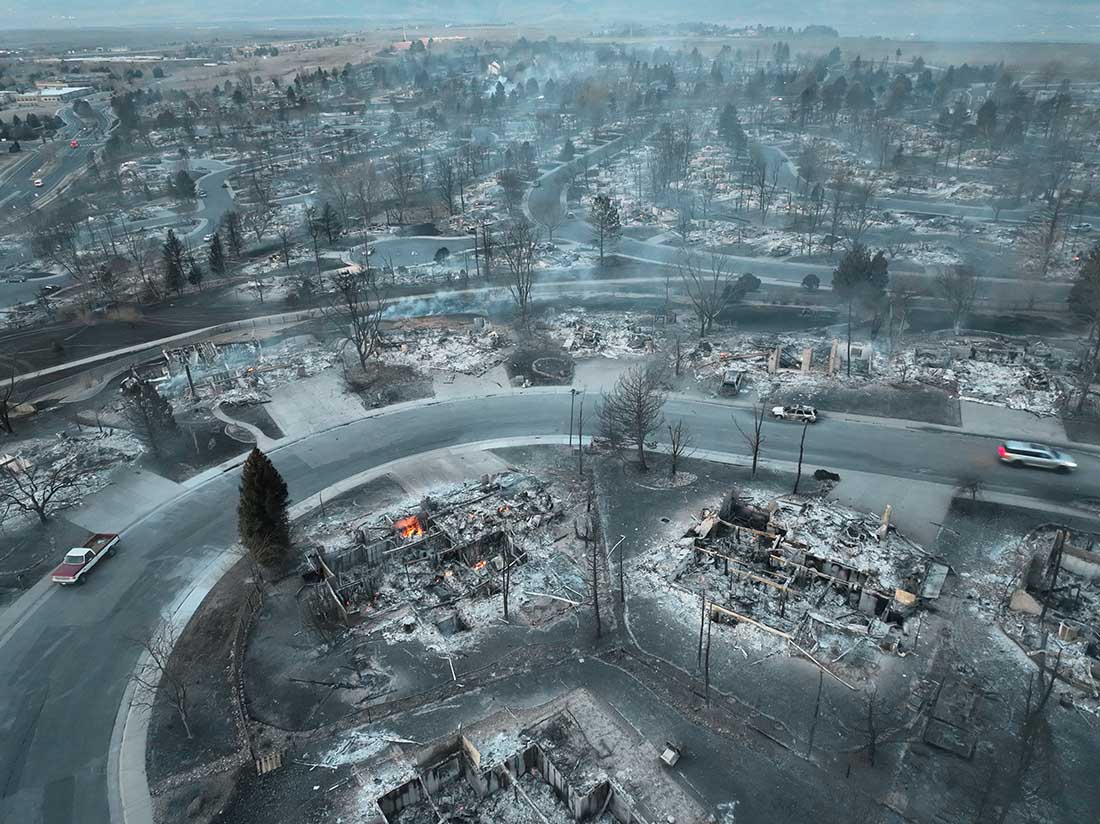Updated 8:12 p.m. MST Jan. 1, 2022
County authorities have have released a preliminary list of the addresses of structures that were destroyed or damaged in the Marshall Fire southeast of Boulder, Colorado. They described it as partial and incomplete at 2 p.m. January 1, 2022.
From the Denver Gazette, Saturday evening:
Three people are missing and feared dead in the wake of the Marshall fire, the Boulder County sheriff said Saturday [afternoon], and nearly 1,000 structures have been destroyed, making the blaze by far the most destructive in Colorado history.
Two of the three missing persons are in Superior, and the third is in the Marshall area, Sheriff Joe Pelle said. He said the search is likely a recovery one, meaning authorities are looking for remains. The missing people’s homes have been destroyed, he said, and cadaver dogs will be brought in Sunday. The debris and snow have “hampered substantially” efforts to search for the missing.
To see all articles on Wildfire Today about the Marshall Fire, including the most recent, click here: https://wildfiretoday.com/tag/marshall-fire/
Thanks and a tip of the hat go out to Minnie and Pat.
6:12 p.m. MST Jan. 1, 2022

Unlike most states, in Colorado county sheriffs have statutory responsibility to coordinate wildland fire response within their county. Boulder County, the location of the Marshall Fire, has five year-round employees with fire responsibilities. They also hire seasonal firefighters during the traditional wildland fire season.
Saturday afternoon Boulder County Sheriff Joe Pelle released damage assessment numbers for the 6,000-acre Marshall Fire southeast of Boulder.
Total numbers are 991 structures destroyed and 127 damaged.
Louisville:
Destroyed – 553
Damaged – 45
Superior:
Destroyed – 332
Damaged – 60
Unincorporated Boulder County:
Destroyed: 106
Damaged: 22
The Sheriff did not specify how many of the structures were homes. Therefore, the numbers could include backyard sheds and other small uninhabited buildings.
What caused the Marshall fire?
Boulder County has clarified information that was previously released about the cause of the fire. In a press conference Friday morning, Sheriff Pelle told reporters that someone told fire authorities that there was a downed power line near where the fire started. But origin and cause investigators had not examined the scene, he said, and the specific cause had not been officially confirmed.
Saturday afternoon the Boulder Office of Emergency Management released a statement:
As of last night, no downed power lines had been located in the area [of the origin]. There were some downed telecommunication lines, but these are not likely to have started the blaze. The sheriff did confirm that one search warrant has been obtained, but he declined to release any additional information about the location or reason for the warrant.

